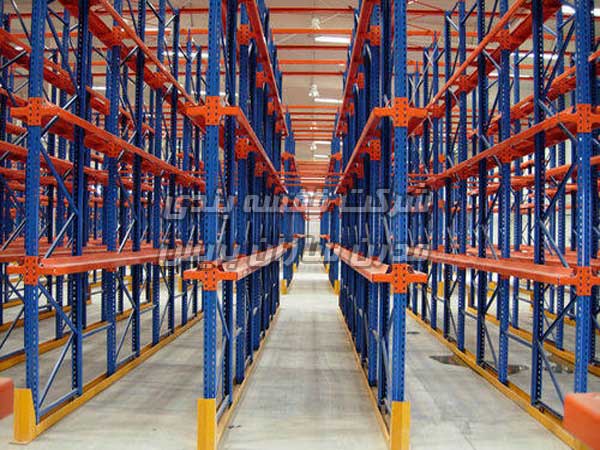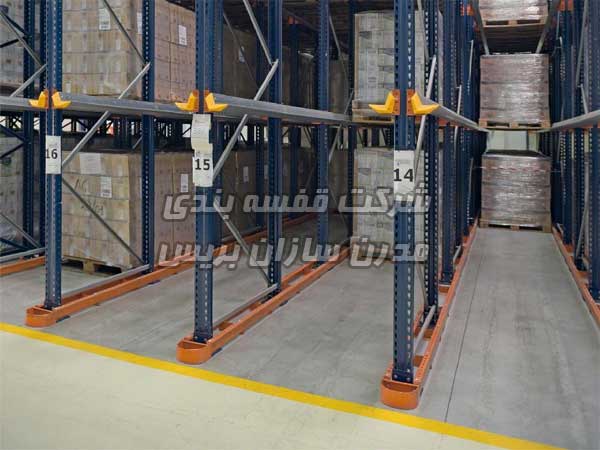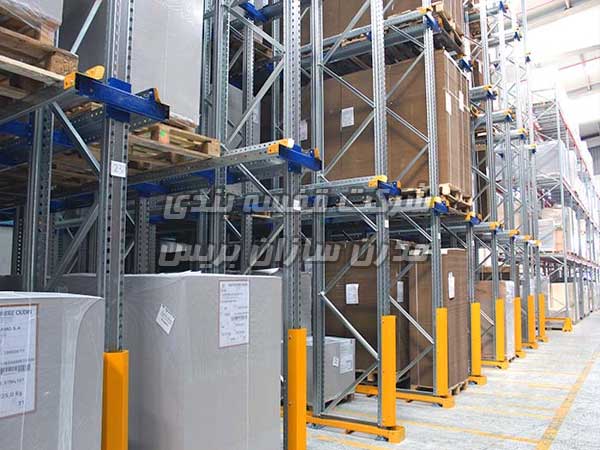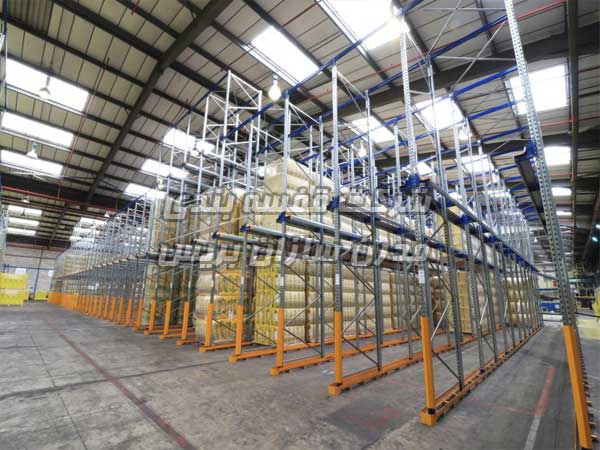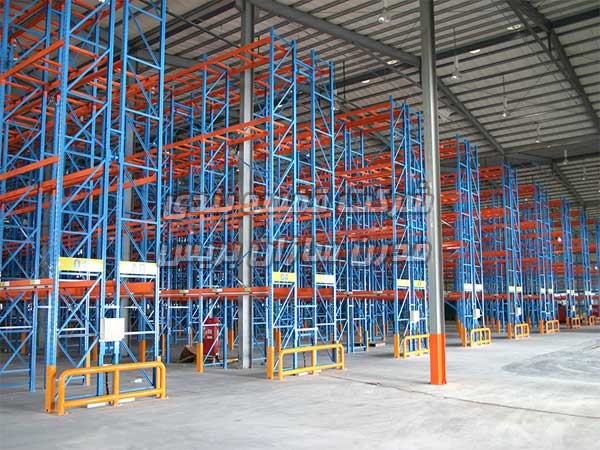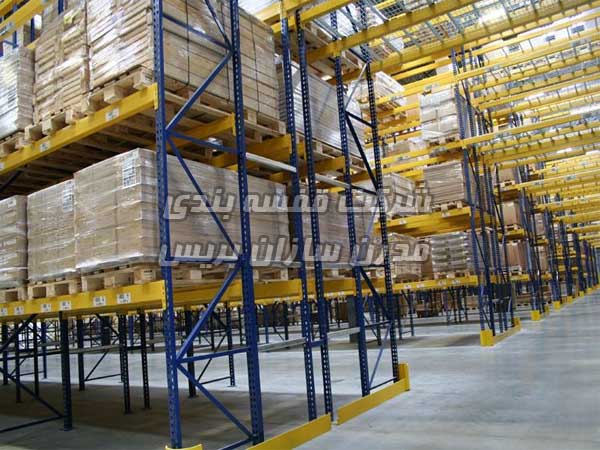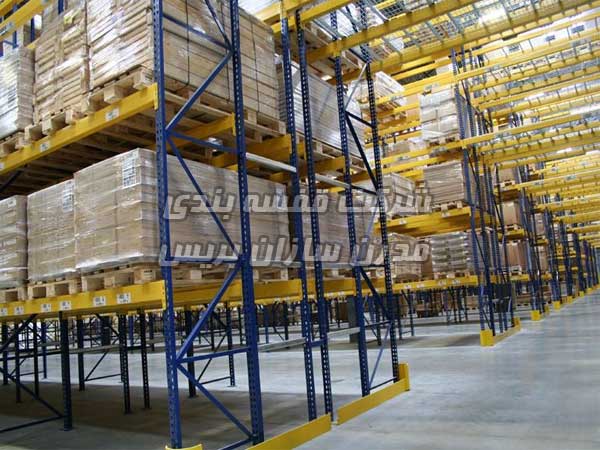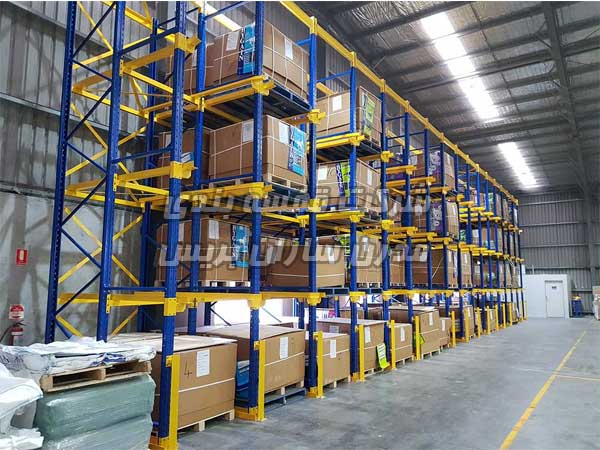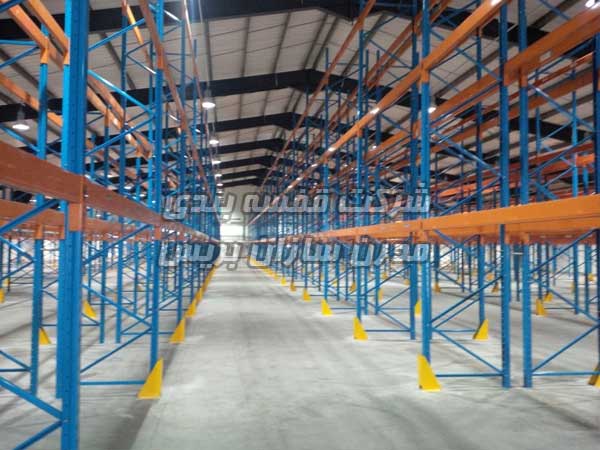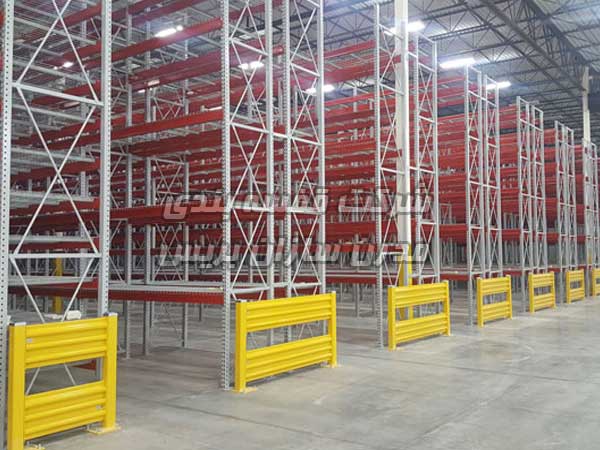Drive-in or drive-through racking is ideal if you’re looking for a very economical, bulk storage system for like-products. Both systems will optimise available space in terms of height and area by storing pallets back-to-back and floor-to-ceiling. Along with support provided for each pallet, there are continual rails running the depth of the system to assist the pallet into position and retrieve from position.The Drive In compact racking system is the optimum solution for the storage of homogenous products with a high number of unit loads per reference.It is a high-density pallet storage system designed to maximise the cubic space available by minimising the operating aisles needed for trucks.Compact pallet racking systems enable excellent stock control in the warehouse, as each lane of the structure is exclusively for a product reference.In this compact pallet racking system, parallel aisles are generated inside the structure, where the forklifts circulate to load or unload the unit loads. The forklift handles the load at a height higher than the level at which it will be deposited and deposits it on the load support rails, which are located on both sides of each level.
This is the most common compact racking system and only needs a single access aisle for the forklift. It uses the LIFO method, so the last load in is the first one out. Drive in compact racking is indicated for warehouses with low material turnover.
This solution requires two accesses, one on each side of the racking. It uses the FIFO method, as the first load in is the first one out. Because it allows access from both the front and rear sides, drive through compact racking is a suitable system for high turnover products.
Advantages and features for Drive in Racking for pallets:
The main advantages of Drive in or Drive through compact pallet racking systems are their maximum compaction and optimisation of space and perfect stock control.
- Space optimization above 80%.
- Low maintenance and low assembly costs make this system one of the most cost-effective systems.
- Structure compatible with other storage systems.
- Provides maximum performance, and utilisation can be over 80% of the available space.
- Enables clearly arranged logistics management with full control of inventories as well as traffic and service flow.
- Designed to allow for quick reconfiguration of the structure for extension or change as needed.
- Ideal for storing low-rotation loads of the same type.
- Eliminates the service aisles found with a conventional pallet racking system.
- Maximised storage floor and height.
- Easily assembled modular structure.
- Trucks enter the system for loading.
- Includes various accessories to increase safety.
- Maximisation of space
- Products of the same type
- Low stock rotation
Drive-in or drive-through Racking system structure:
The Drive in storage system is made up of sets of frames and vertical uprights joined together to form inner lanes.
Each lane is equipped with support rails on both sides, laid out at different levels, on which pallets are placed. For loading and unloading operations, the forklift truck enters the lanes with the unit load lifted above the rail where it will be placed.
This compact storage system allows as many SKUs as loading lanes. Depth and height are dependent on the number of pallets to be stored.
Drive in Racking Components
The main components and accessories of Drive in compact pallet racking systems are:
Upper longitudinal beam
The upper longitudinal beam joins the frames in the upper area crosswise, to secure the structure by creating gantries. The beams must be placed in all the compact racking aisles.
Horizontal brace
The horizontal brace is a metal component that reinforces the compact structure and is located at the top.
Frame
The frame is one of the basic elements of Drive in compact racking. These frames consist of 2 uprights, their corresponding diagonals, baseplates and fixing elements.
Forklift guide rail
This is a steel rail at floor level that runs along the whole aisle. Its objective is to guide the forklift when it enters the structure and protect it against possible impacts. It helps to separate the forklift from the Drive in compact racking.
Frame and upright protection
The frame and upright protectors protect the installation from possible damage due to impacts by the forklift.
Welded baseplate
The welded baseplate is an especially designed component for frames with the highest load and height.
Upright
The upright is the main element of the frame and is galvanised. The customer has available to them a wide variety of upright sections and lengths to adapt to their warehouse needs.
Pallet guidance
It is situated at the front of the pallet beam or pallet support rail and helps operators when depositing the unit loads. It also protects the structure against potential impacts.
Pallet beam or support rail
These are the horizontal profiles on which the pallets on each level of the Drive in racking system are supported. They are metal and are perpendicularly secured to the upright by means of the brackets.
Bracket
Brackets are the metal components that support the support rails or pallet beams on each level, and therefore indirectly support the pallets. This component is secured to the upright.
Pallet backstop
Pallet backstops are preventive safety backstops and their main function is to prevent the pallet from falling at the back of the aisle due to any inappropriate manoeuvre.






